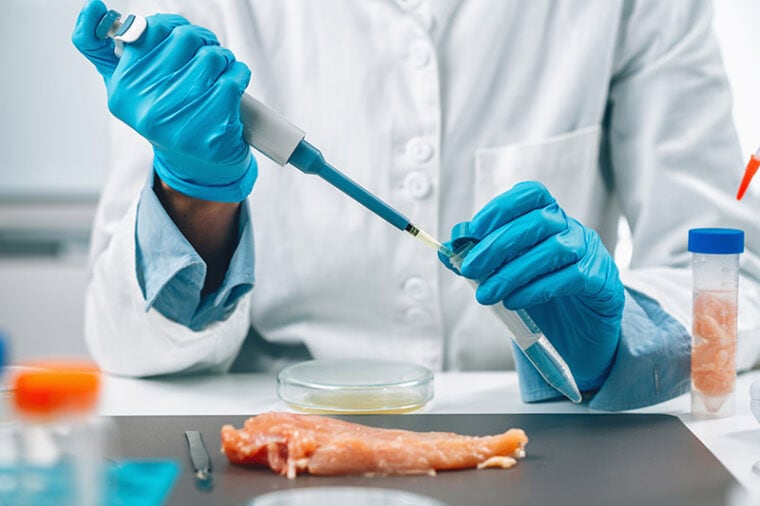
Click to Skip Ahead
Salmonella in cats is similar to Salmonella in humans; it is a bacterial infection ranging from non-symptomatic (not sick cats) to severely sick cats and even death. In general, Salmonella is a foodborne illness you hear about on the news, where it kills people.
Since not only can your cat get Salmonella, but you can give it to each other, Salmonella is considered an important public health disease to monitor and prevent. Read on to learn more.

What Is Salmonella?
Salmonella is a bacterium with the scientific name is Salmonella enterica. Most of the time, it infects the gastrointestinal tract, causing diarrhea illness. But it can also infect the bloodstream and cause systemic septicemia. It is called typhoid at this point.
It is most commonly spread when the feces of an infected animal contaminate the food, water, or raw meat fed to cats (or other animals).

What Are the Signs of Salmonella?
While some cats can carry the bacteria Salmonella enterica in their GI tract without getting sick (they are asymptomatic carriers), if they do get sick from it, they tend to get very sick and need hospitalization. Watch out for these signs of Salmonella:
What Are the Causes of Salmonella?
Salmonella is caused by a bacterium spread through contaminated food or water. It is one of the reasons raw meat and unwashed fruits and vegetables are so dangerous for dogs, cats, and humans to eat.
Microscopic contamination occurs when meat or other food types are processed through the agricultural system. While cleanliness and sanitation have made Salmonella poisoning much less common in modern countries. The rise of raw feed diets has degraded that progress and increased the incidents in pets (and humans).

How Do I Care for a Cat With Salmonella?
A cat that is sick from Salmonella will most likely need hospitalization. Their diarrhea is often so bad that they quickly become dehydrated and critically ill.
The Salmonella infection in the GI tract degrades the barrier between the GI tract and the bloodstream making it very easy for Salmonella to spread into the circulatory system and become systemic. Compounding an already dangerous situation. So, they need careful and aggressive veterinary intervention.

Frequently Asked Questions (FAQs)
Can’t I just get antibiotics to stop the bacterial infection?
Antibiotics are often part of the treatment for Salmonella, but they can also be ineffective and potentially cause more harm than they solve.
The microbiome in the gastrointestinal tract is made up of good bacteria. When a bad bacteria gets in and takes over, as in the case of Salmonella, the good bacteria that ensure a functioning GI tract are outcompeted and depleted by the Salmonella. In some cases, further reducing the number of good bacteria by giving antibiotics gives Salmonella an even better chance of spreading and becoming resistant to the antibiotics used. But antibiotics are not always a cure-all.
Can I get Salmonella from my cat?
Yes! You can get Salmonella from your cat, even if they are clinically healthy. You can also get Salmonella from raw or freeze-dried cat food.
How to prevent Salmonella in a cat?
Do not feed raw meat. Do not feed freeze-dried meat. Be careful when handling raw meat, eggs, and milk, ensuring they do not cross-contaminate food that is going to be eaten.

Conclusion
While it may seem romantic and wholesome to feed cats natural meats and let them pretend that they are wild hunters out scavenging for their meals, the risks associated with this fantasy can be deadly.
Cats, at the end of the day, are pets; they have been bred for 100s of years to live with humans. And keeping them safe often means that they adopt many of our own domesticated and modern practices, including eating cooked food. And not dying of preventable food poisoning from the early 1900s. Old-fashioned is not always better.
Featured Image Credit: Microgen, Shutterstock






